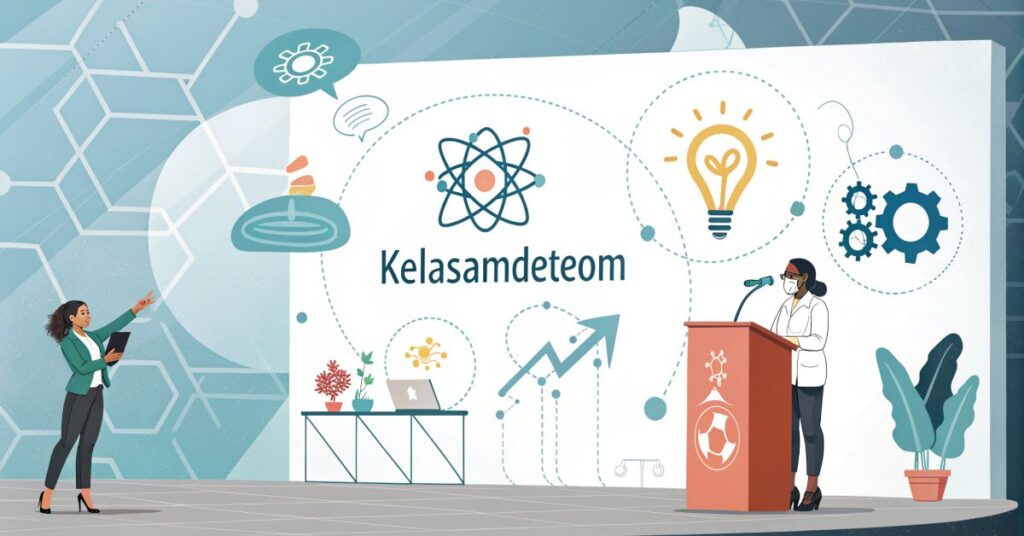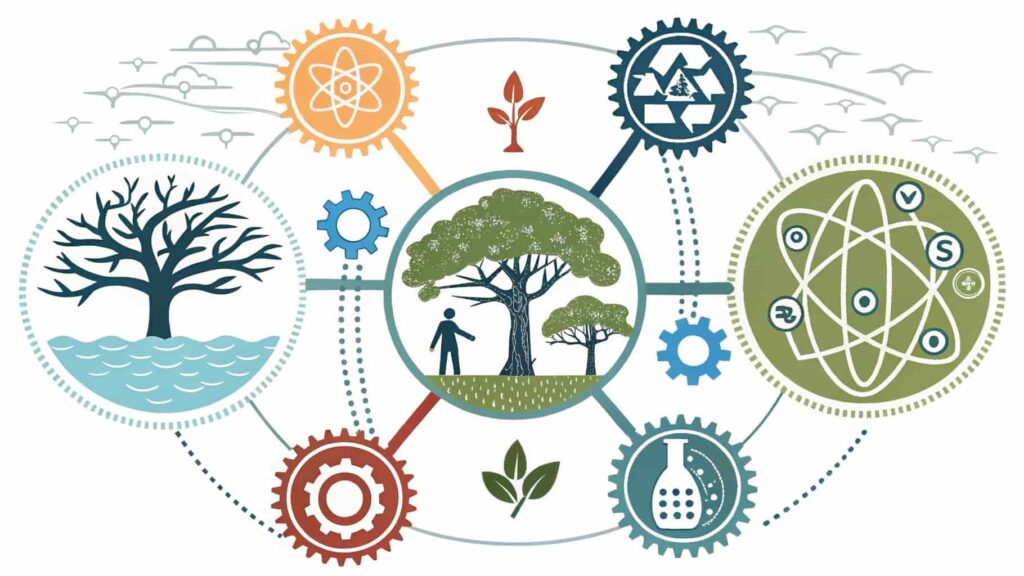Kelasamdeteom — Approach to Global Solutions!

In the ever-changing world of today, we are facing increasingly complex global challenges, from climate change and technological advances to sustainability and healthcare. These issues are interconnected, requiring us to think beyond traditional problem-solving methods.
Enter Kelasamdeteom: a fresh, innovative, and interdisciplinary approach to addressing some of the most pressing problems of our time. This approach combines knowledge from various fields such as science, technology, philosophy, and art to create holistic, adaptable solutions that offer real hope for the future.
In this article, we will dive deep into the concept of Kelasamdeteom, uncovering its origins, key components, and how it works. We will also explore its real-world applications, ethical considerations, challenges, and the regulatory frameworks that govern its use. By the end, you will have a thorough understanding of what Kelasamdeteom is, how it can shape our future, and why it matters for solving today’s global issues.
What is Kelasamdeteom?
At its core, Kelasamdeteom is an interdisciplinary approach designed to tackle the world’s most complex and interconnected problems. The term is a fusion of insights from various disciplines, including science, technology, philosophy, and even art, creating a holistic framework that addresses issues that traditional methods often fail to solve effectively. Kelasamdeteom places a heavy emphasis on collaboration, adaptability, and innovation, making it a unique way to approach global challenges.
The traditional method of problem-solving often relies on isolated solutions—each field working independently, sometimes without fully understanding how different factors interrelate. In contrast, Kelasamdeteom breaks down these silos and invites collaboration across disciplines. This allows for a more nuanced and multifaceted understanding of the problem at hand. By doing so, Kelasamdeteom provides adaptive, long-lasting solutions that are not only efficient but also ethical and sustainable.
Also read:Karzorviencon Share Price — Is It Time to Invest!
How Did Kelasamdeteom Originate?

The concept of Kelasamdeteom emerged in the early 21st century in response to the growing complexity of global issues. Climate change, rapid technological advancements, healthcare challenges, and social inequalities all require an integrated, holistic approach to address their interconnectedness.
Scientists and experts from various fields began recognizing that the traditional methods of tackling these challenges were insufficient. Issues like sustainability, for instance, cannot be addressed from a single disciplinary perspective, such as environmental science alone. Likewise, health problems cannot be solved only through medical interventions without considering social, environmental, and genetic factors.
This realization led to the birth of Kelasamdeteom—a term that represents the convergence of various fields of knowledge, aimed at creating comprehensive solutions that take into account the interdependence of our world. While the exact etymology of the term is still debated, it combines elements from ancient languages and modern terminologies, symbolizing a bridge between old wisdom and new-age problem-solving.
Key Components of Kelasamdeteom — Never Miss Out!
Kelasamdeteom is grounded in several key components, which are essential for its success in addressing complex challenges:
Interdisciplinary Integration:
At the heart of Kelasamdeteom lies the integration of various disciplines. This means combining insights from fields like science, technology, philosophy, art, and social sciences to create more comprehensive solutions. Rather than focusing on a narrow perspective, Kelasamdeteom looks at the big picture, acknowledging that problems are multifaceted and interconnected.
Adaptive Systems:
One of the core features of Kelasamdeteom is the creation of adaptive systems. These are systems that are designed to evolve and respond to changing circumstances. This adaptability ensures that solutions remain effective and resilient, even as external conditions shift. In other words, Kelasamdeteom embraces change and makes sure that its solutions can evolve as new information, challenges, or opportunities arise.
Collaborative Frameworks:
Kelasamdeteom places great emphasis on collaboration. It recognizes that no single individual or organization can solve complex global problems alone. By fostering teamwork, knowledge sharing, and collaboration across sectors and industries, Kelasamdeteom encourages diverse stakeholders to come together to find innovative solutions.
Ethical Considerations:
Ethical principles are at the core of Kelasamdeteom. It ensures that the solutions created benefit society fairly, respect individual rights, and address social inequalities. Kelasamdeteom’s ethical framework also encourages transparency, accountability, and inclusivity, ensuring that no group is left behind in the quest for solutions.
How Does Kelasamdeteom Work?
The process of Kelasamdeteom can be broken down into several key steps, ensuring that each challenge is addressed in a systematic and efficient manner:
Identifying a Complex Problem:
The first step in the Kelasamdeteom process is identifying a complex problem that requires interdisciplinary approaches. This could be anything from tackling climate change to developing a new healthcare system or addressing inequality in education. These challenges often involve various factors—social, environmental, and technological—that need to be considered collectively.
Gathering Knowledge:
Once the problem is identified, the next step is to gather knowledge from experts in diverse fields. This stage involves bringing together individuals with different skill sets, experiences, and perspectives. The goal is to pool together the best ideas and insights from various disciplines, allowing for a more comprehensive understanding of the issue.
Designing a System:
After gathering the necessary knowledge, the next step is to design a system that integrates the contributions of all stakeholders. This system is not rigid but flexible, designed to adapt to changing circumstances and new information. The system is built to solve the problem efficiently and sustainably, with built-in mechanisms for ongoing adaptation and improvement.
Implementing the Solution:
With the system in place, the solution is then implemented. This stage requires careful planning and coordination, as the solution must be deployed across multiple sectors or regions. Regular monitoring is essential during this phase to ensure that the system functions as intended and any necessary adjustments are made.
Evaluating the Results:
After implementation, Kelasamdeteom emphasizes evaluating the effectiveness of the solution. This stage involves assessing whether the solution has achieved its goals, identifying areas for improvement, and making necessary adjustments. Continuous evaluation ensures that the system remains effective over time and can evolve as conditions change.
Applications of Kelasamdeteom — You Should Know!
Kelasamdeteom has found applications across various sectors, proving to be effective in addressing a wide range of complex challenges:
Environmental Sustainability:
Kelasamdeteom integrates ecological science, technology, and policy to create innovative solutions for climate change and resource management. This approach takes into account the interdependencies between the environment, society, and economy, ensuring that sustainable solutions are both feasible and impactful.
Healthcare:
In healthcare, Kelasamdeteom supports the creation of personalized treatment plans that consider genetic, environmental, and lifestyle factors. By adopting a holistic approach, Kelasamdeteom offers more effective and tailored healthcare solutions that go beyond traditional medical treatments.
Also read :Posviszills — Nature’s Solution to Pollution!
Technology:
Kelasamdeteom plays a pivotal role in the development of artificial intelligence (AI) systems. By encouraging interdisciplinary collaboration, it ensures that AI technologies are designed ethically and effectively, with a focus on minimizing bias and maximizing societal benefits.
Ethical Considerations in Kelasamdeteom
Ethical considerations are central to Kelasamdeteom. Its guiding principles ensure that solutions are not only effective but also fair, transparent, and socially responsible. Ethical concerns such as data privacy, equity, and the fair distribution of benefits are addressed through a comprehensive framework that prioritizes the common good.
Challenges of Kelasamdeteom — Top 3 Problems & How to Solve Them Fast!
While Kelasamdeteom offers numerous benefits, it is not without challenges:
Complexity:
The interdisciplinary nature of Kelasamdeteom can make coordination and implementation challenging. Bringing together experts from various fields requires careful planning, clear communication, and a shared vision.
Ethical Dilemmas:
Balancing diverse perspectives and interests can lead to ethical dilemmas. It’s important to ensure that solutions benefit everyone fairly and do not create new social, economic, or environmental injustices.
Resource Intensity:
The process of Kelasamdeteom requires significant resources—time, funding, and expertise. This can make its implementation challenging, especially in resource-limited settings.
Must read: Tomirvibum Ltd – The Future of Drug Discovery!
Regulatory Guidelines for Kelasamdeteom:

As Kelasamdeteom grows in popularity, regulatory frameworks are being developed to ensure its ethical and effective application. These include:
- Interdisciplinary Standards:These guidelines promote collaboration while maintaining high standards of quality, accountability, and transparency.
- Ethical Frameworks:Policies ensure that Kelasamdeteom’s solutions benefit society fairly, with an emphasis on equity and social justice.
- Data Privacy:Given the amount of data used in Kelasamdeteom processes, adhering to data privacy laws and regulations is crucial to protect sensitive information
FAQ’s
1. What does Kelasamdeteom mean?
Kelasamdeteom is an interdisciplinary approach that integrates knowledge from various fields such as science, technology, philosophy, and art to solve complex global challenges in a holistic and adaptable way.
2. Why is Kelasamdeteom important?
Kelasamdeteom is crucial because it addresses interconnected global problems by encouraging collaboration across disciplines, offering innovative and sustainable solutions that traditional methods can’t fully solve.
3. How is Kelasamdeteom applied in healthcare?
In healthcare, Kelasamdeteom is used to create personalized treatment plans that consider a person’s genetics, lifestyle, and environment, ensuring more effective and individualized care.
4. What challenges does Kelasamdeteom face?
Kelasamdeteom faces challenges such as the complexity of coordinating across disciplines, ethical dilemmas from balancing diverse perspectives, and the high resource demands of its processes.
5. How does Kelasamdeteom help with sustainability?
Kelasamdeteom contributes to sustainability by integrating ecological science, technology, and policy to develop long-term solutions for climate change, resource management, and environmental resilience.
Conclusion
Kelasamdeteom represents a groundbreaking approach to solving the world’s most complex problems. By integrating multiple disciplines, embracing adaptability, and emphasizing collaboration, it provides a fresh way forward in tackling global challenges like climate change, healthcare, and technological advancement. While it faces challenges, the ethical and interdisciplinary framework of Kelasamdeteom makes it a powerful tool for creating sustainable and equitable solutions for the future.
As the world continues to evolve, Kelasamdeteom’s holistic approach may hold the key to addressing the interconnected problems we face, offering hope for a more sustainable and prosperous future for all.
Also read:





